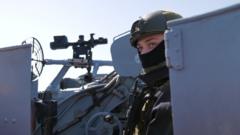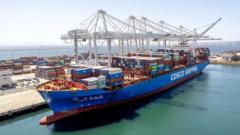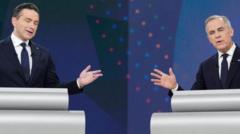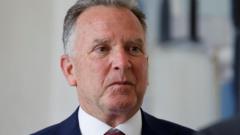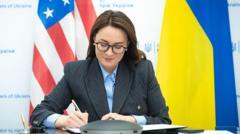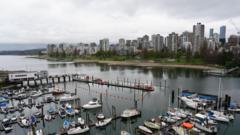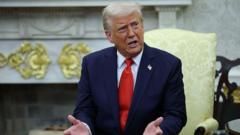This article explores the shifting roles of Treasury Secretary Scott Bessent, Commerce Secretary Howard Lutnick, and trade adviser Pete Navarro in shaping Trump's tariff policy, shedding light on the complex dynamics that led to an abrupt pause in sweeping tariffs.
Navigating Tariff Turbulence: The Shift in Trump's Trade Strategy

Navigating Tariff Turbulence: The Shift in Trump's Trade Strategy
A closer look at how internal dynamics and key players within the Trump administration influenced the recent rollback of tariffs.
In the wake of President Donald Trump's surprising decision to pause a series of reciprocal tariffs, the dynamics within his administration have come to the forefront. On April 9, moments after the announcement sent shockwaves through financial markets, Treasury Secretary Scott Bessent took the spotlight in a press briefing, declaring the decision "took great courage." His presence marked a key shift in the communication and decision-making landscape regarding tariffs, a move significantly impacted by ongoing conversations with business leaders and advisers.
Absent from Bessent's presentation were Commerce Secretary Howard Lutnick and trade adviser Peter Navarro, two figures known for their hardline stance on trade policies. This absence seemed to underscore a strategic reorganization within the administration, as analysts speculated about the shifting power dynamics surrounding trade negotiations. William Alan Reinsch, former head of the National Foreign Trade Council, noted the contrasting roles of these officials, suggesting that Bessent represented a more conciliatory approach as opposed to the aggressive positions held by Lutnick and Navarro.
While the specifics leading to the rollback remained vague, reports indicated Bessent's influence had grown through his established network and understanding of market implications—qualities that resonated with Trump's economic objectives. The tension between advisors may have contributed to confusion and volatility, signaling a lack of coherent messaging.
On the morning of the decision, an Oval Office meeting included key players, but the absence of U.S. Trade Representative Jamieson Greer, who was testifying elsewhere, added to the sense of discord among staff. The disjointed statements from various officials further created an environment of uncertainty regarding the administration's tariff strategy.
Some experts, like Terry Haines of Pangaea Policy, argued this confusion could be strategic, suggesting it might create a perception of choice among the administration’s advisors. Haines opined that Bessent might emerge as the key figure in future communications regarding tariff policies, drawing interest from financial analysts and market stakeholders.
Ultimately, there is a consensus among economists and trade policy experts that the restructuring of tariff communication could lead to more market stability. Andrew Hale of the Heritage Foundation welcomed a more organized approach, anticipating that businesses and investors desire clearer guidance moving forward. As the geopolitical landscape continues to evolve, the navigation of tariffs will remain a complex but vital aspect of the administration's economic strategy.


